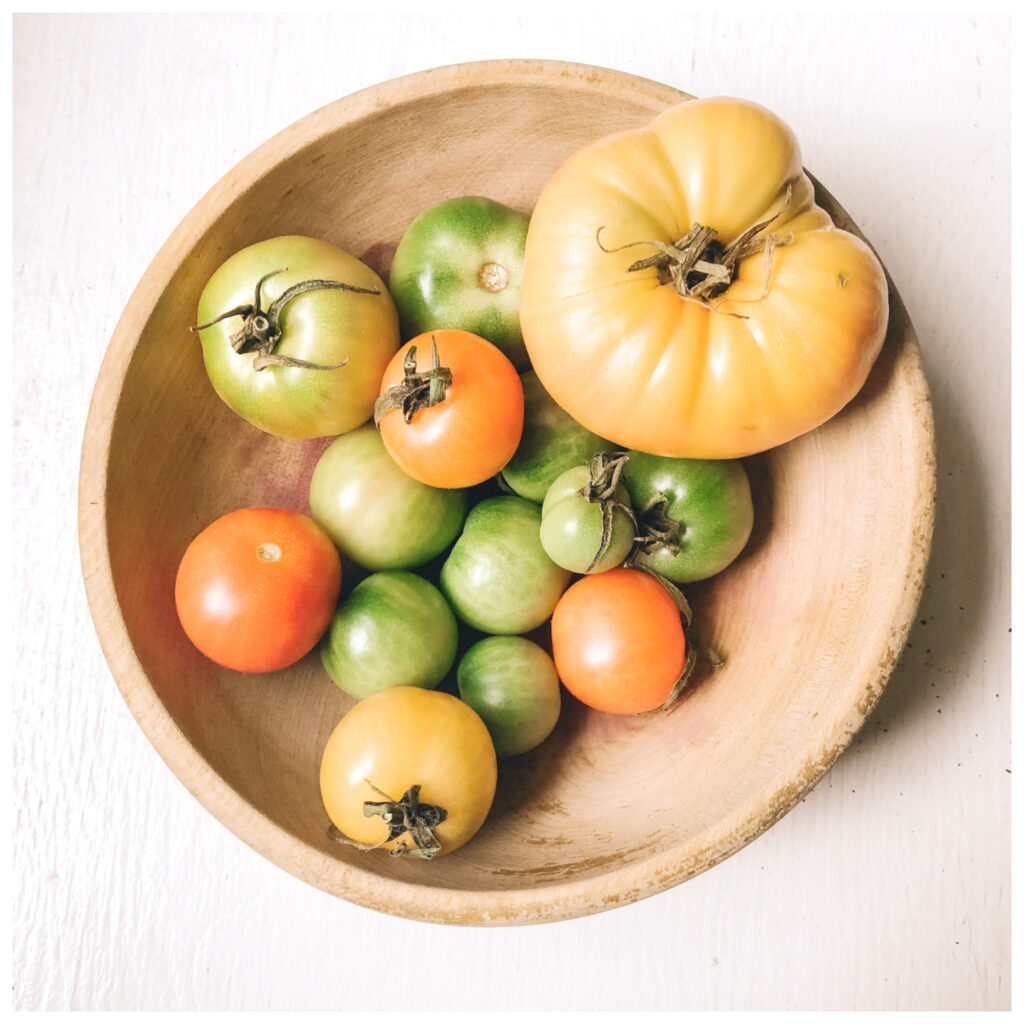This year was our very first attempt at growing a vegetable garden in the city. I’ve always wanted to have a veggie garden, and given that our backyard is pretty much concrete, I never considered that it would be doable. But when covid happened and everything shut down we figured it would be the perfect time to make our first attempt! We purchased a raised bed and started the process.
We were pretty ambitious in our approach, planting a lot of things in a small area. We planted green onions, lettuce, kale, cucumbers, green beans, cherry tomatoes, and beefsteak tomatoes, and figured we’d jump right in and learn as we go. Of the many takeaways from this season, there were four specific things I thought were valuable to share for anyone looking to grow a garden in an urban city- see below!
1. Provide Adaquate Spave
When space is limited, maximizing your planting potential, while still providing adequate growth space is important. We purchased a raised garden bed roughly 8ft long, by 2ft wide, and about 2ft deep.
We added a trellis to help create more vertical space and encourage things like our cucumbers and beans to grow vertically. We added additional chicken wire around the sides of the garden to help with keeping pests out, to help control plant growth and to maintain space.
Given that our tomato plants needed room to spread out (and a lot more attention to pruning then we anticipated) we’ll likely plant less tomatoes next year to help free up more space.
2. Short Stuff Together, Long Stuff Together
We decided to divide up the garden to have the shorter plants in the front and the taller plants in the back, assuming this would provide the shorter plants the adequate sunlight needed, however as the taller plants grew taller, we quickly realized that they were beginning to shade the short guys from above and not allow for enough sunlight each day. At this point we were on the fence about purchasing a second garden bed for more space next year, and with this in mind, we decided next year we’re going to try planting the short crops together and the longer crops together in separate garden beds to see how that changes things. If this isn’t an option for you due to space, planting in pots is just as helpful!
3. Companion Planting
A great way to maximize your harvest is companion planting. Companion planting is the practice of planting certain crops together so they can benefit each other through soil nutrients, pest control, and assistance with weather protection. This is a traditional Native American growing method known as the “Three Sisters” most famously with corn, beans, and squash.
Another great way to help plant growth is succession planting. The easiest way to do this (that I’m aware of) is to plant seeds next to mature plants. The mature plants help protect the seedlings as they grow and once they are established the more mature plants can be cut back to provide room.
We didn’t learn about these methods of planting until the end of this season, but we’ll definitely be noting them for next year!
4. Quality Soil
One of the perks of having a raised garden bed is the ability to control the soil quality more easily then an in-ground garden bed. We used Promix Premium Organic Vegetable and Herb Soil (as per my mother’s recommendation) and needed about six 18kg bags to fill our garden bed. If you’re keen and like to do things from scratch, you can also make your own organic soil, with a mix of 1/3 compost, 1/3 peat, and 1/3 vermiculite. Using quality soil can help ensure success with your foliage by providing the necessary nutrient and minerals they need to flourish!
There’s nothing more satisfying then enjoying the literal fruits of your labor by growing your own food and eating it. From the many things there are to learn from growing a garden, I hope you find these tips and reminders helpful!
In Wellness,
Hilary

Ty Woolner
Hilary lives in Toronto, Ontario with her Fiance Ty, and their toy poodle Elu. When she's not assisting her clients, Hilary loves spending time in Northern Ontario (where she grew up) with friends and family. Hilary offers a variety of manual and movement services, courses, and continued education geared towards the ever-expanding minds and life-long students.
